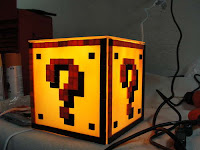Josiah McElheny talking about the notions of originality
| One of the key principles of the connectivity lecture was notions of originality in visual communication and further more the art world. Being original and different is something every artist strives for. Doing things and coming up with aesthetic creations in which no one else has done before could well be an innocent and valid goal for an artist but the simple fact is that it is quite unattainable. Being creative has been around nearly as long as we have. We can only hope to recreate and existing idea and add our own style or ideals onto the artwork. After the preraphelite era artists where now abundant with varying degrees of skill but nonetheless a wealthy person could acquire one personally if he so required. The paintings where originally intended for private consumption, therefore artists would make copies of their own works many times without thinking that they would be seen together. This is an example of pieces of art being recreated and re drawn by the artist who created them, often many times, picasso famously recreating la dora maar in about 60 different adaptations. So for contempory artists looking for indivudualistic style, it is a very tall order. |
 |
| La Dora Maar au chat |
I have often found trouble trying to find a style or a particular technique to stick to. But I think the most important thing is not to worry about it, also the fact I am still young, bears evidence that I should try and fail first before resigning to a specific style. See what works for me, many artists died well into their 80's and were still experimenting artistically. It's a case of finding out what methods work for you, paint a way that is comfortable and not be scared to try something different. It is healthy to push yourself at every opportunity.
Bricolage
Another key principle was Bricolage and its use in contempory culture. Many moons ago the process of Bricolage involved using photography, printed imagery and the more traditional pen, pencil and charcoal. In modern times the process is a little different, often relying on computer software such as Adobe photoshop to adjust and re-touch images to create an intended purpose. A famous example of traditional bricolage would be Elsie Wright-Cottingley's fairies in which a series of 5 photographs were produced in 1917 and used by Arthur Conan Doyle and cause wide hysteria and a nation to question the reality of the mythical creatures known as fairies.
Companies will often hire the assistance of a graphic designer when it comes to advertising, often to portray the corporate identity of the firm or to stir a particular feeling or emotion they wish to evoke in the audience. For example quite often soft drink companies such as coca cola would have a designer photoshop water droplets onto their cans for use in advertising poster, to give the sense of a cool, cold and refreshing drinking experience.

















































